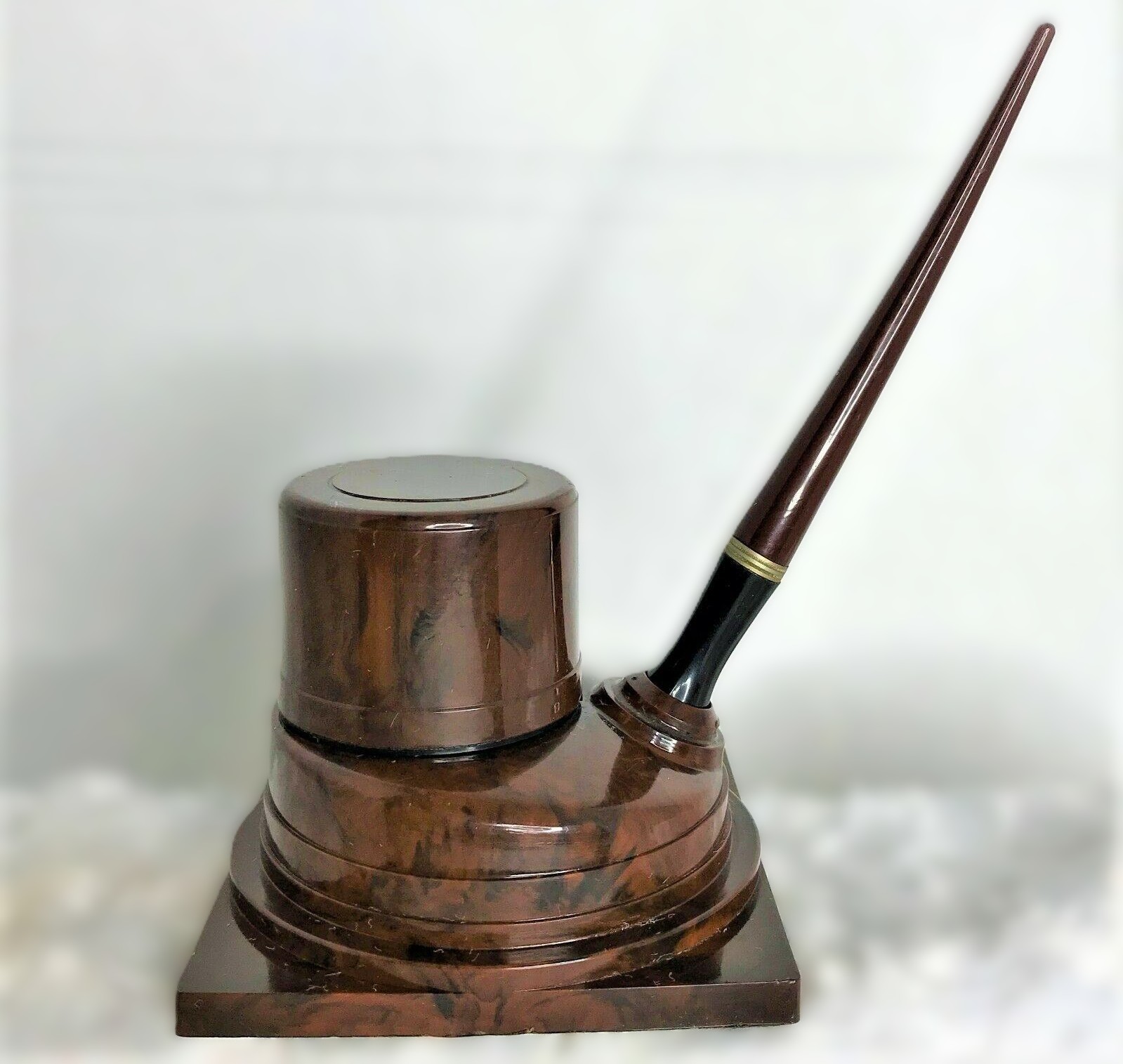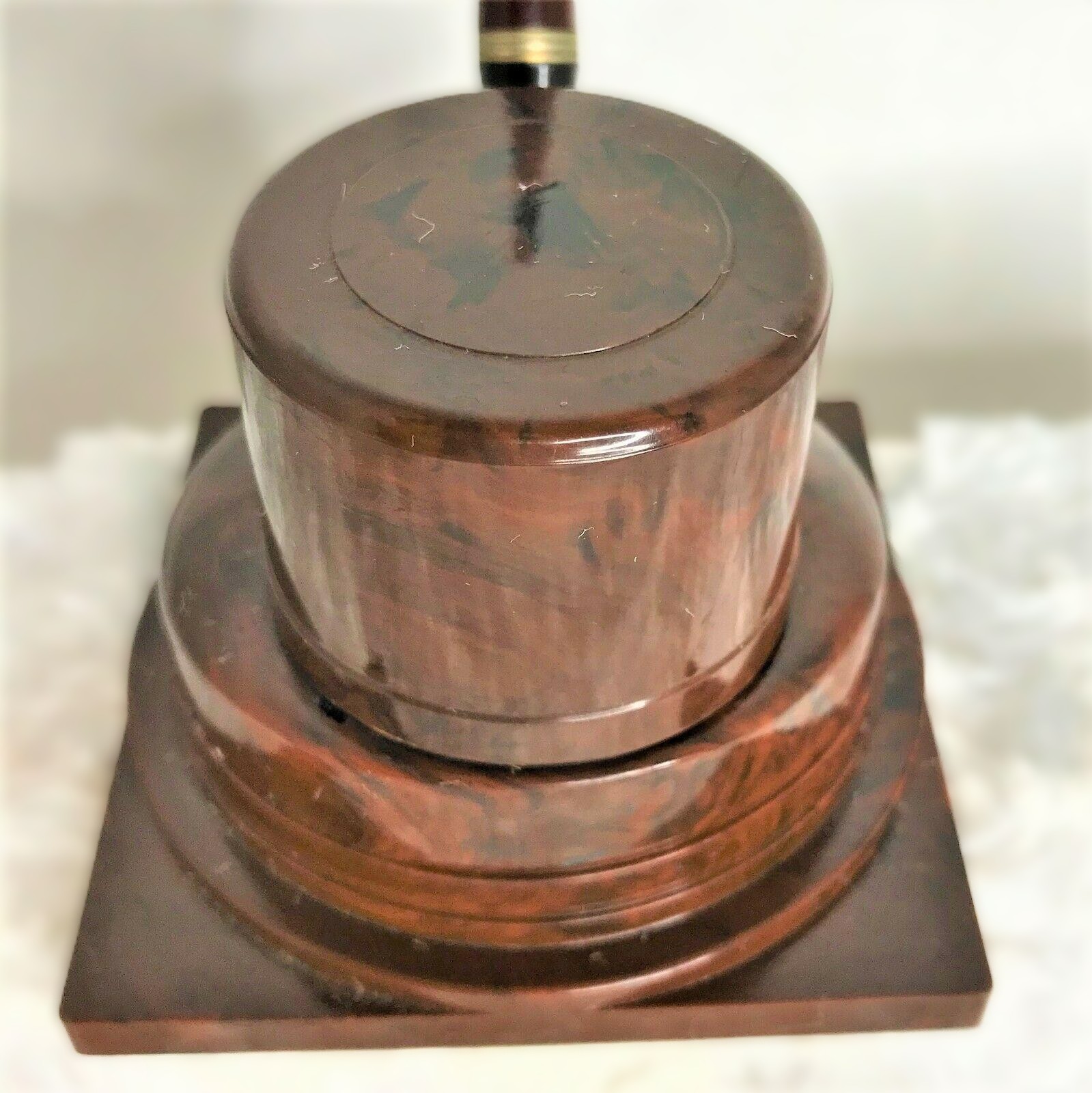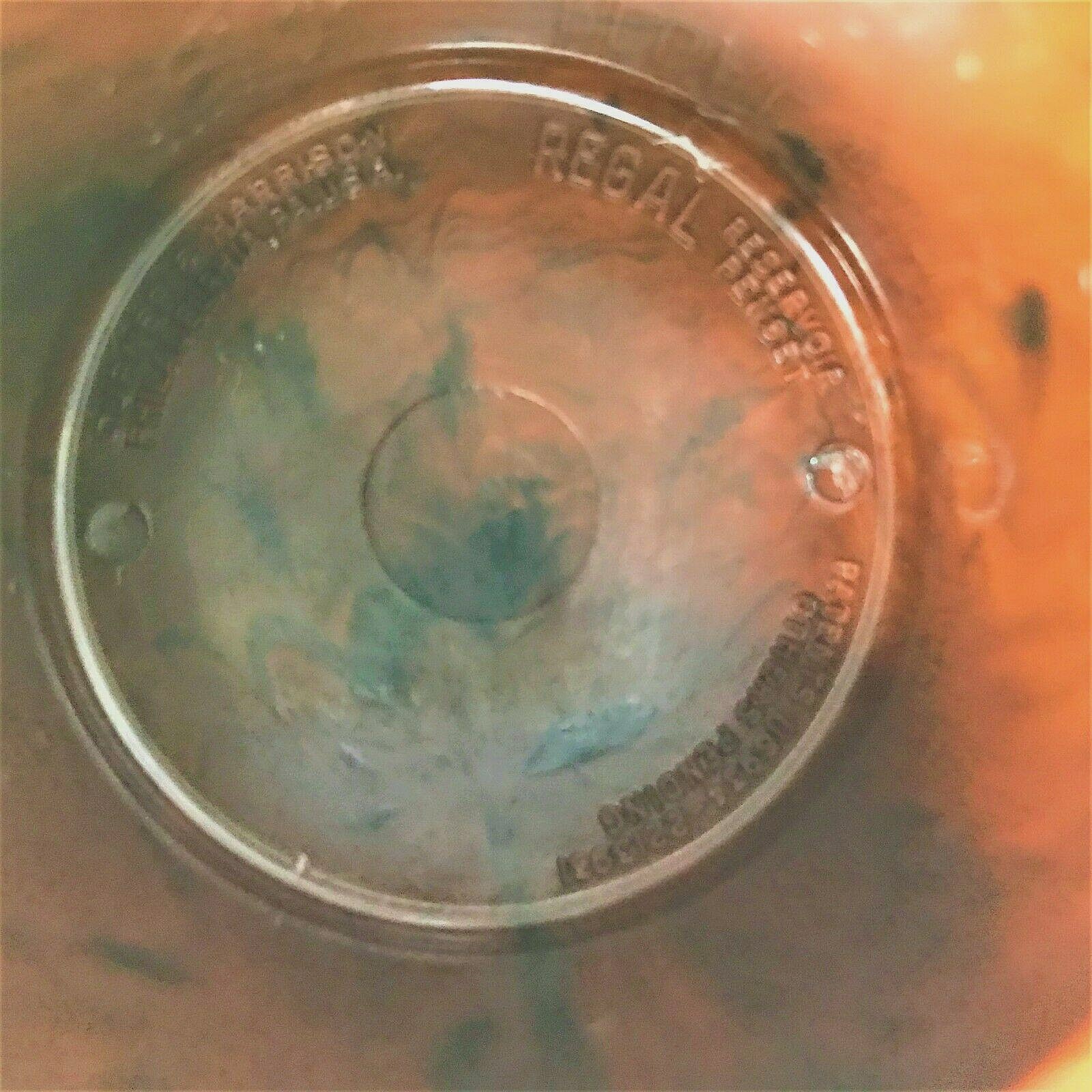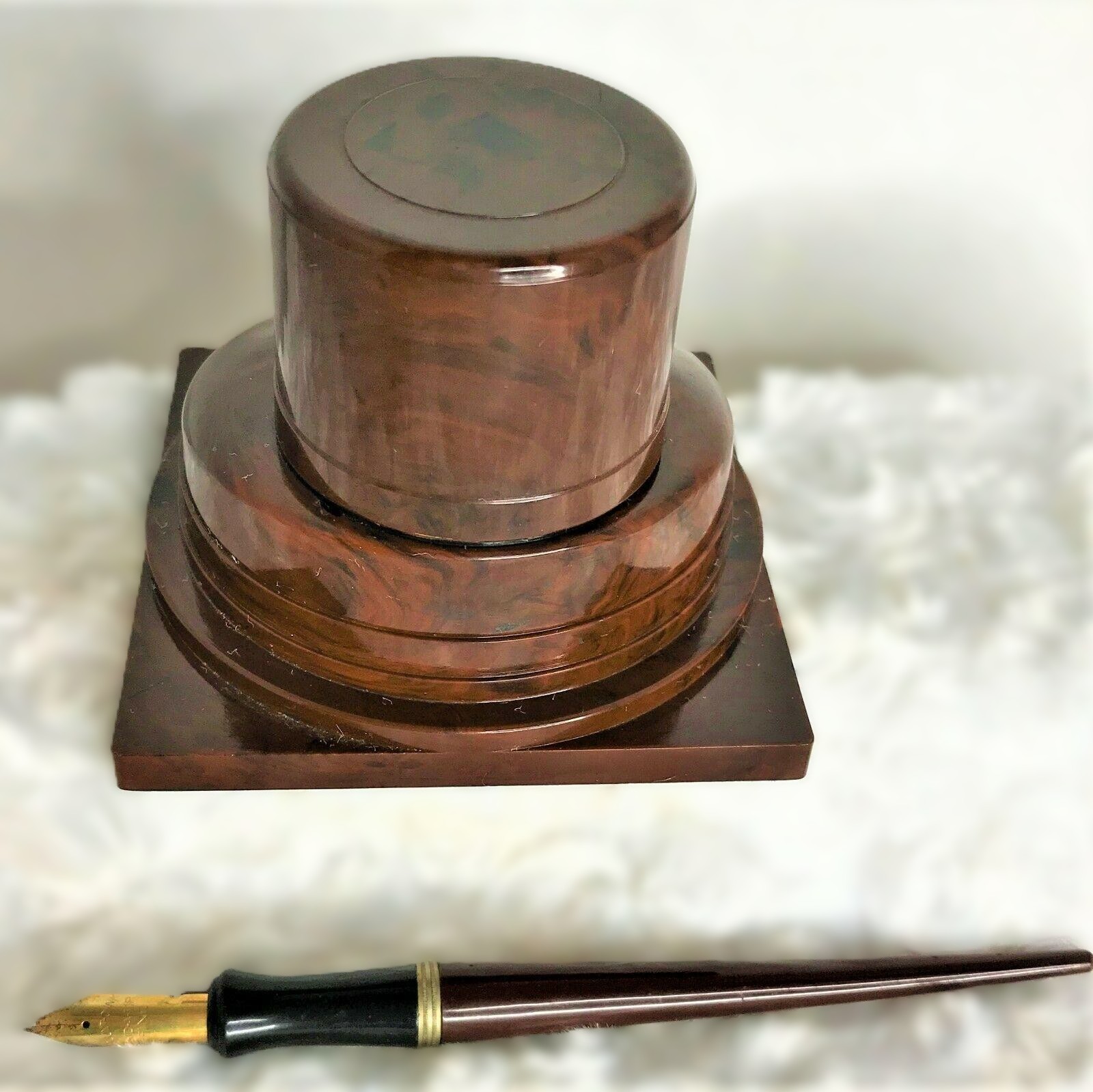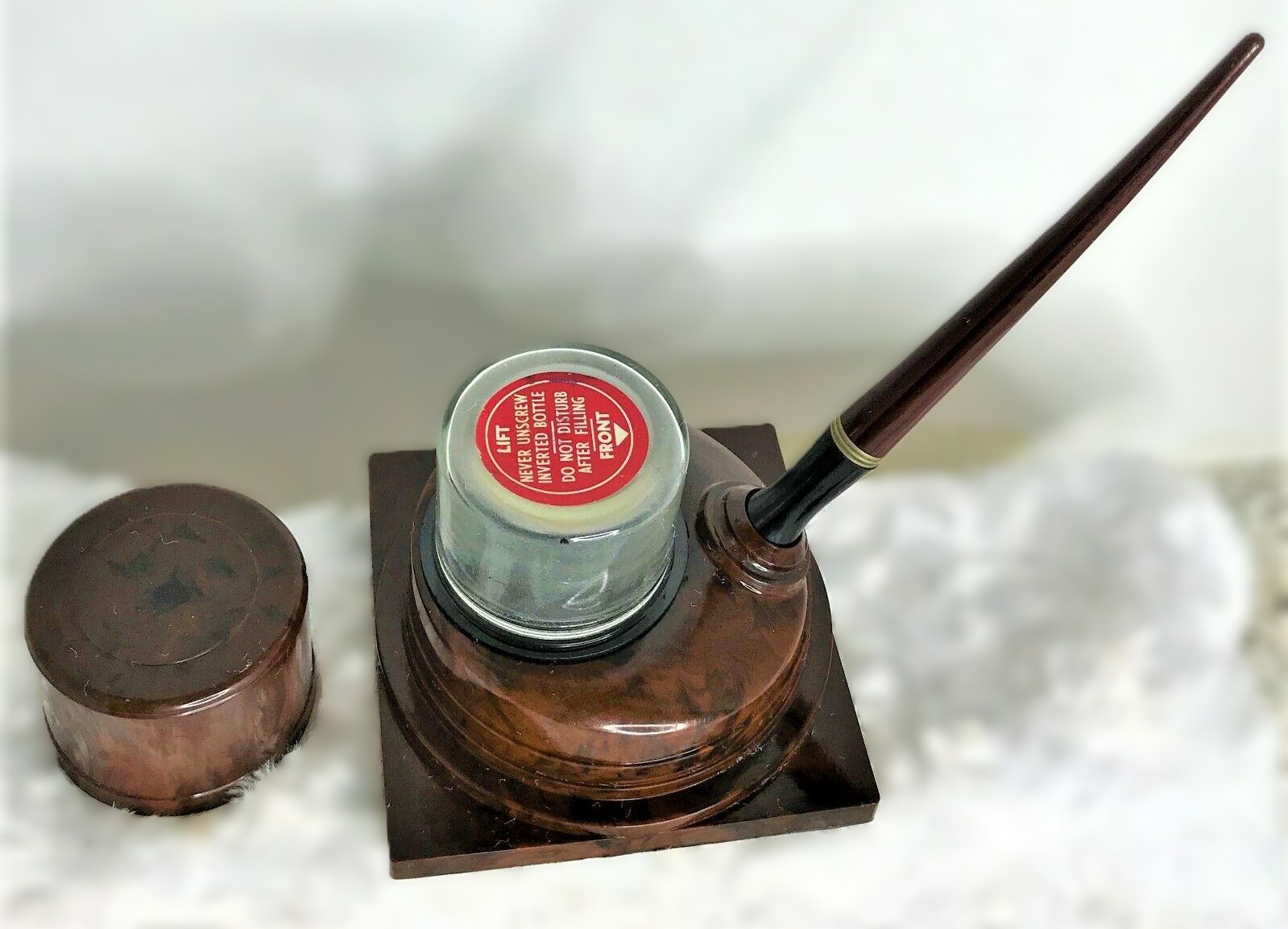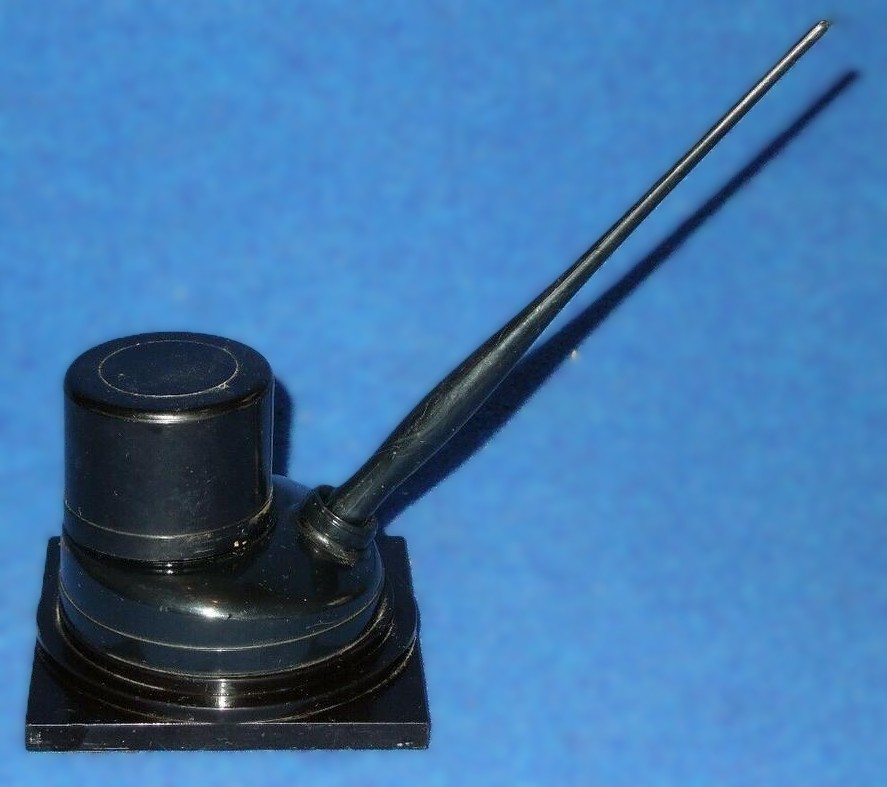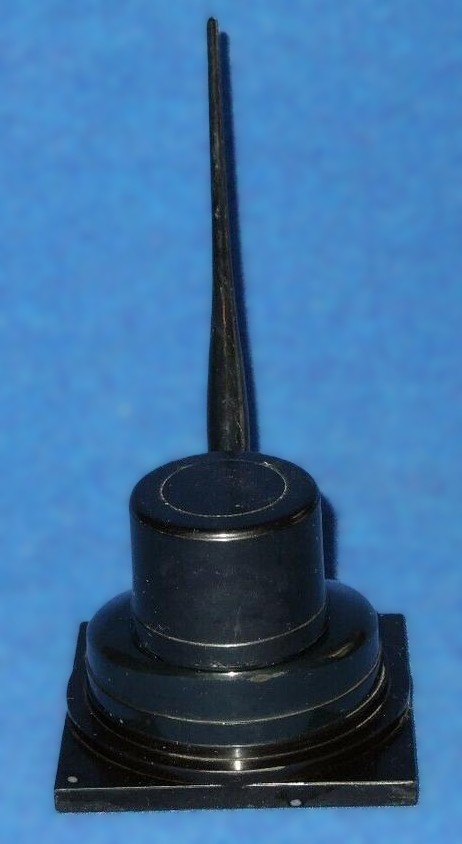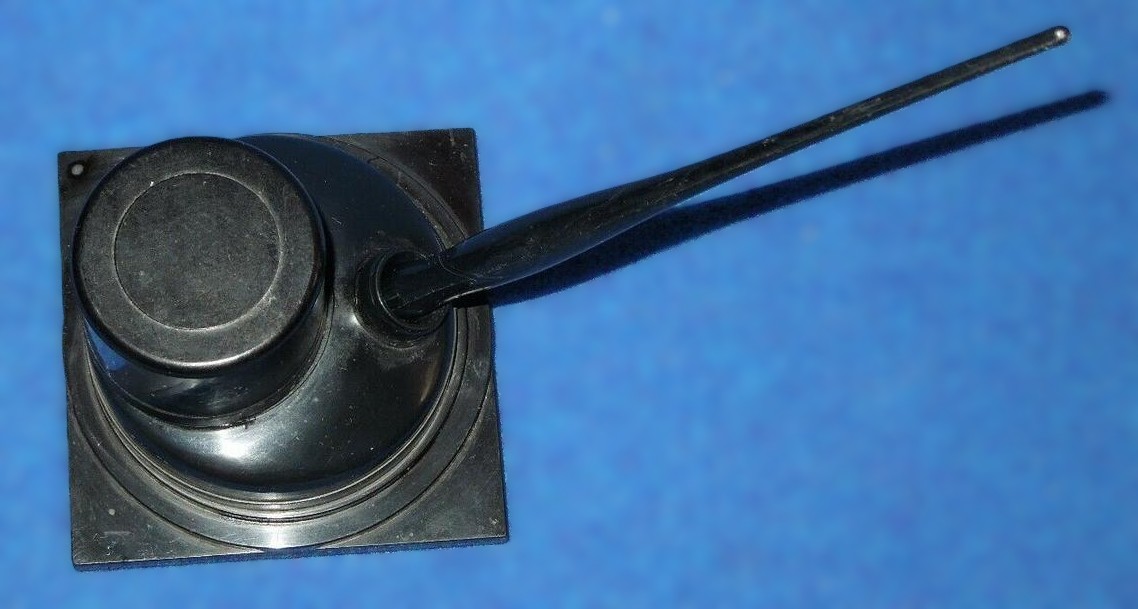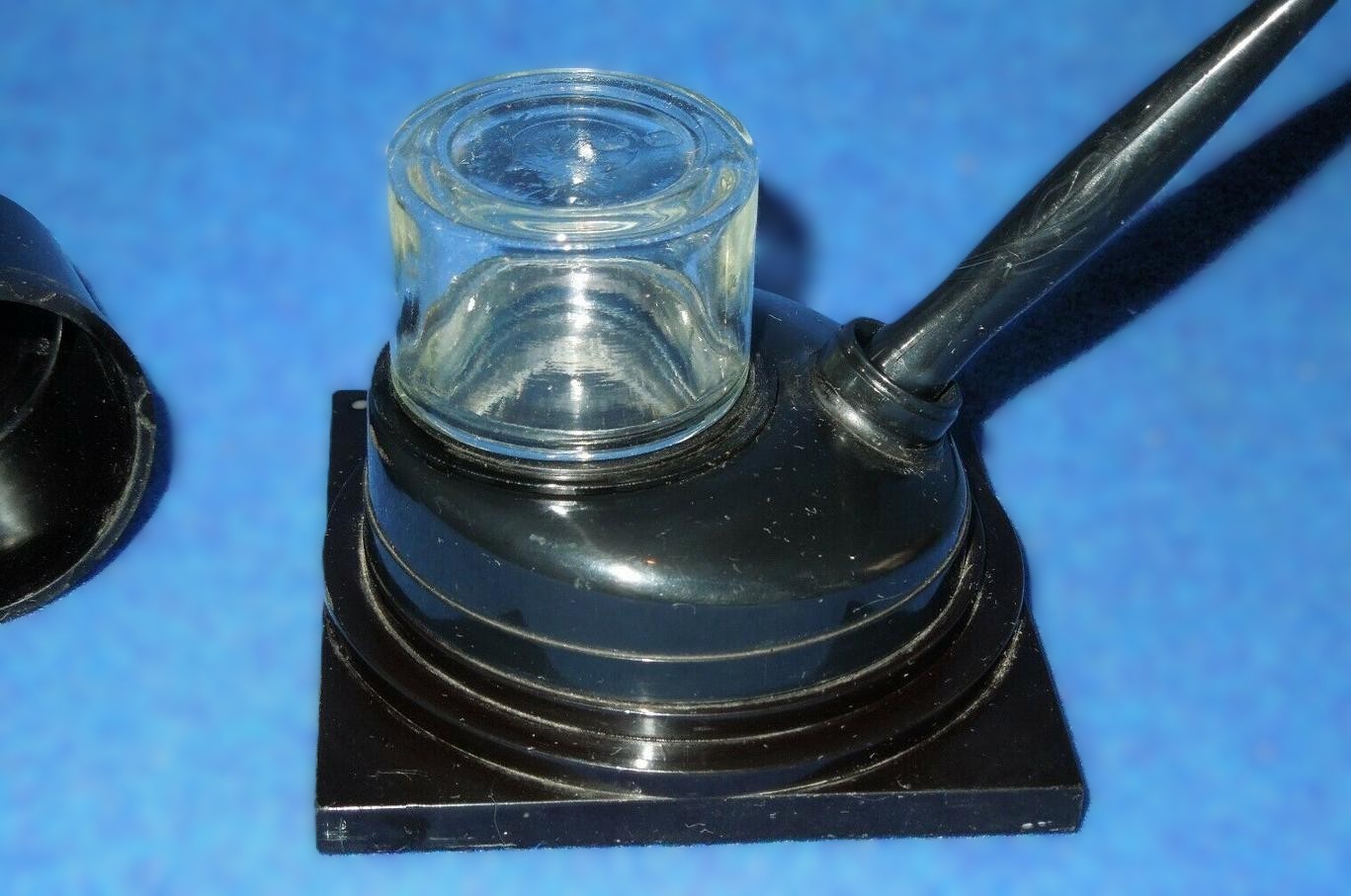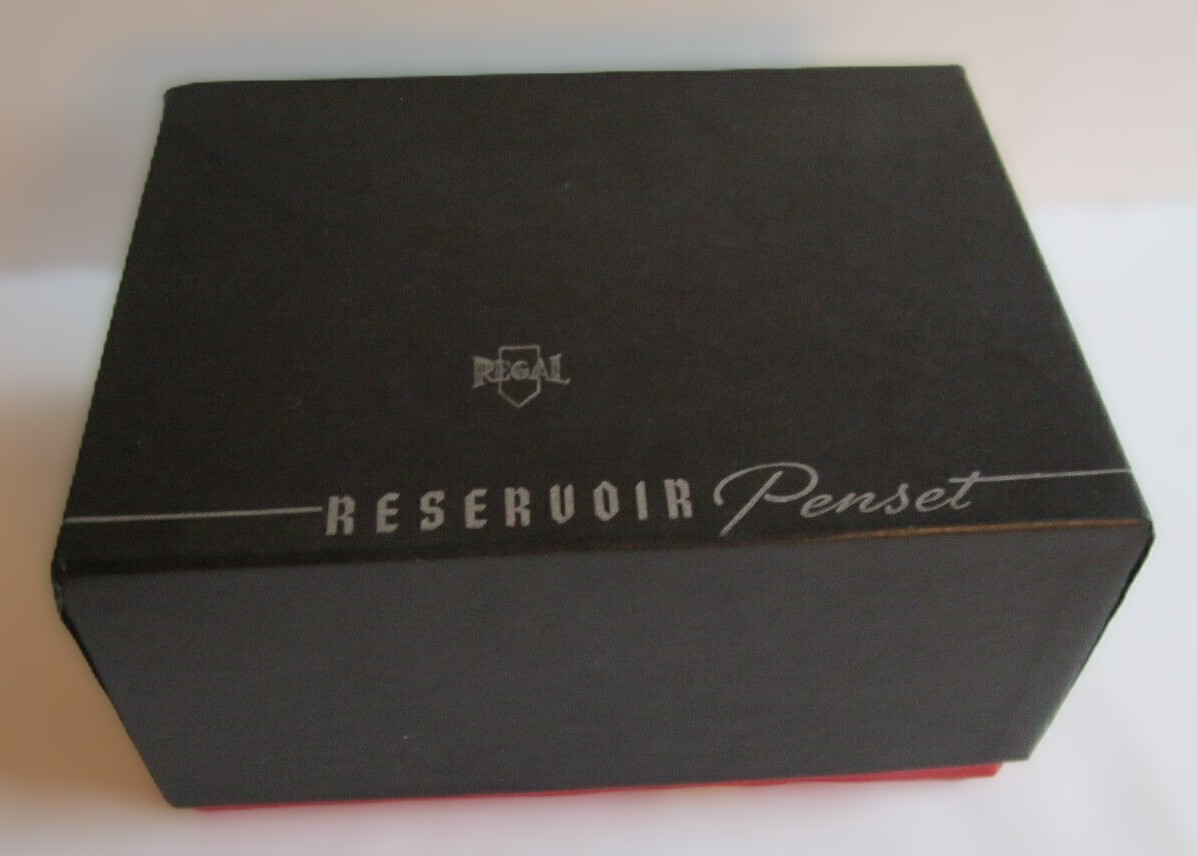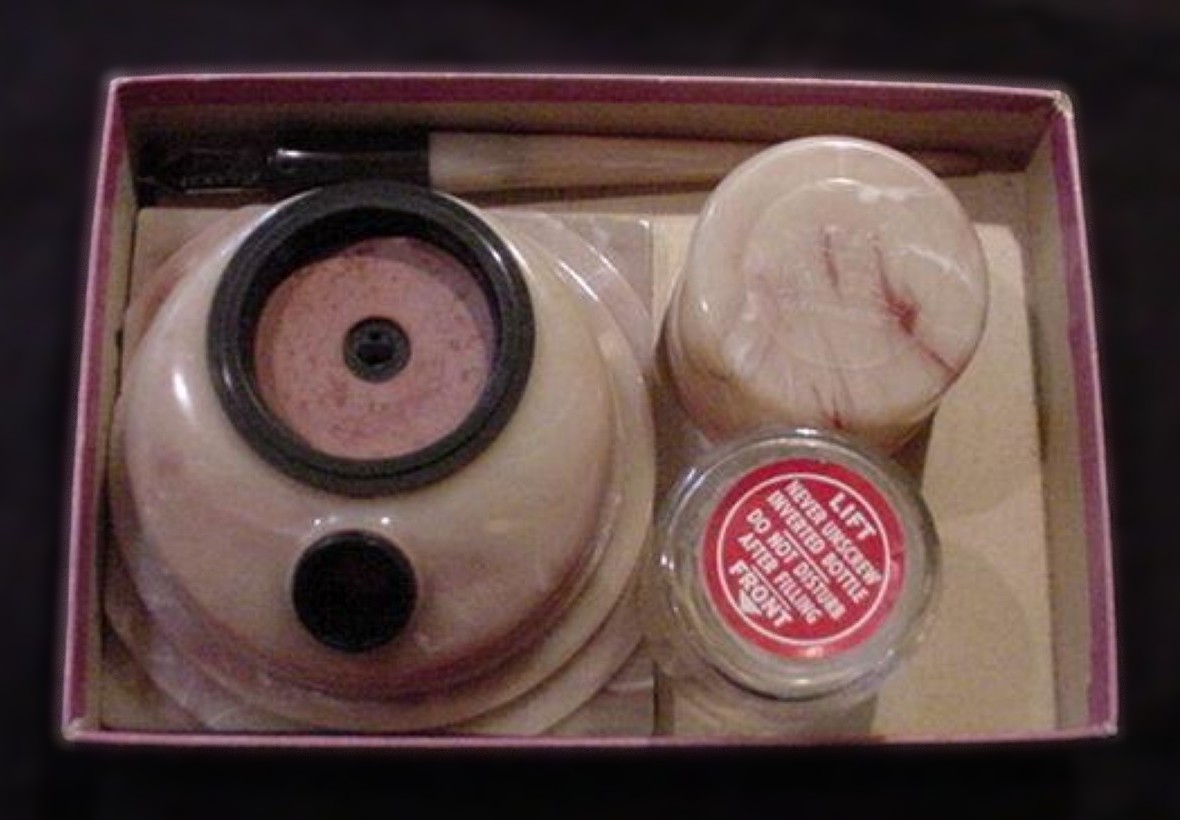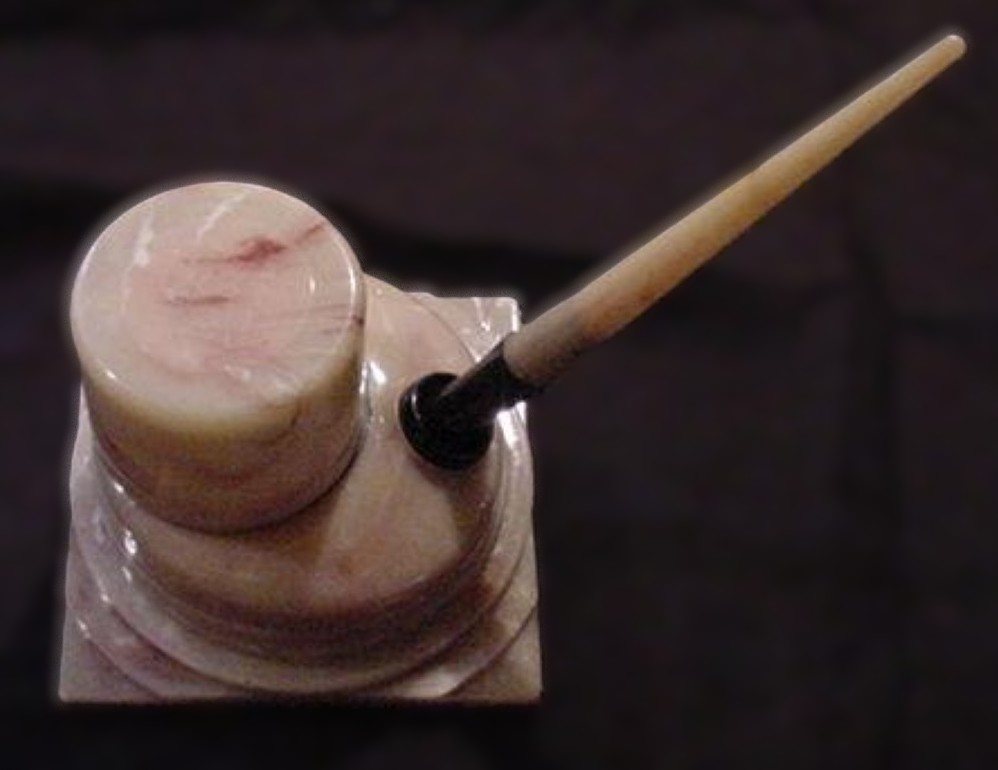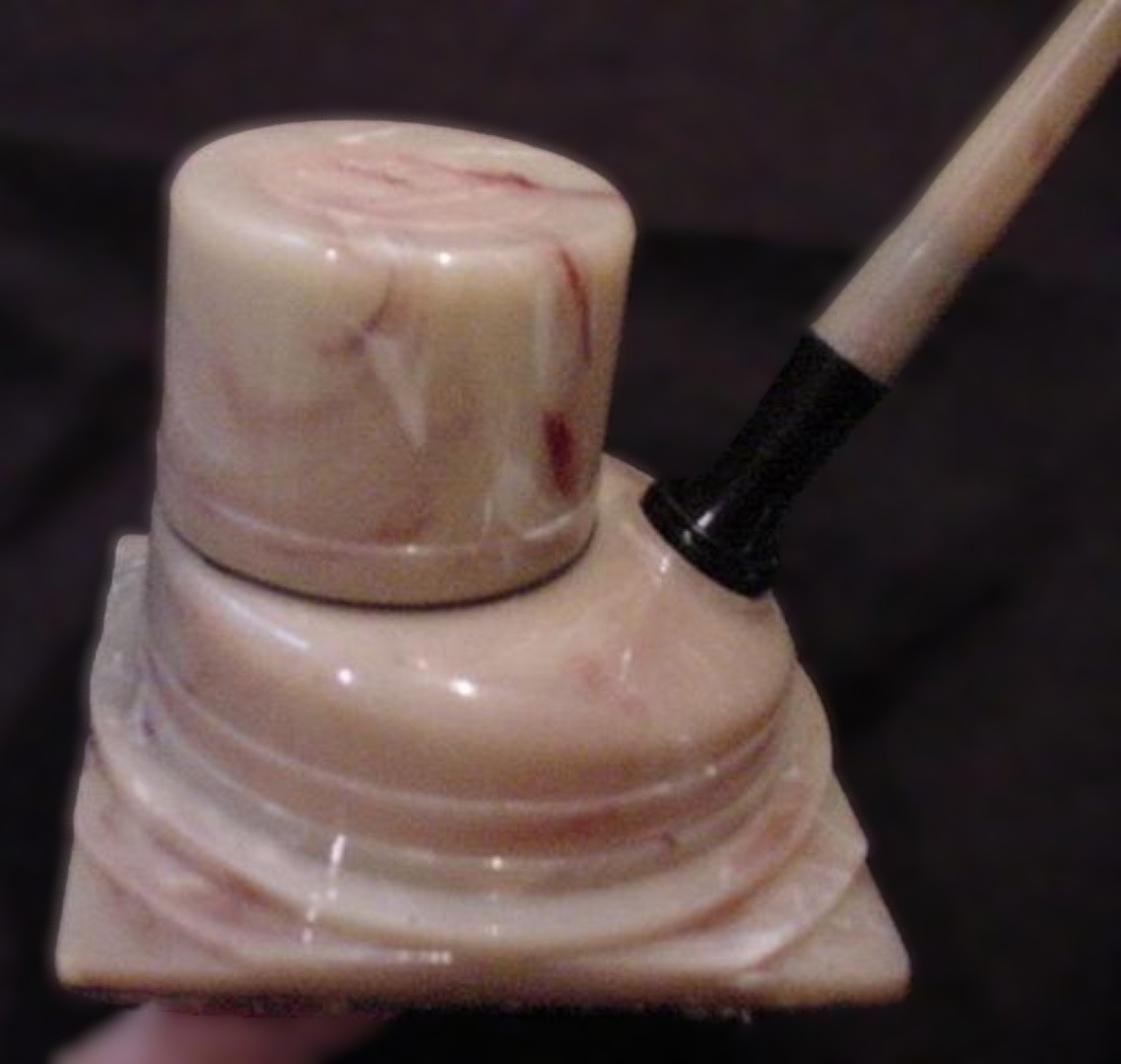
Regal Reservoir Pen Set
| Categories | Plastic - Bakelite - Gutta Percha |
| Material | Plastic/Celluloid |
| Markings | See Narrative |
| Origin | United States |
| Date or Era | circa 1940 |
| Measuring | 3 ⅝” x 3 ⅝” x 3” (excluding pen) |
| Patent | Patent # 116,934 dated Oct 3, 1939 |
A desk set, such as this “Regal Reservoir Pen Set”, comprised a pen and a desk base with a socket into which the pen was inserted for dipping or parking. Considered separately from the pen, the base was often called a fountain inkwell or fountain inkstand, or sometimes a reservoir base. With these desk sets one still had to dip the pen, but less than one would dip “old-fashioned” dip pens. And, depending on usage style, one might not have to re-dip one’s pen at all. Pick up the pen, write the note, then park the pen again. The pen was always ready to write and held more ink than an ordinary dip pen. This setup avoided excess ink, dust, and other kinds of crude on the nib.
Richard Binder and David Watts, Jr. have written extensively about “Dip-less” desk sets. The information that follows comes from their research. Here is a link to their website which provides more information: One-Dip Desk Sets • RichardsPens.com
The Turner & Harrison Steel Pen Manufacturing Company of Philadelphia, Pennsylvania was a major manufacturer of steel pens. The company was founded in 1875 by craftsmen John Turner and George Harrison, both of whom had come from England to the United States to work in steel pen companies (Esterbrook and the Washington Medallion Pen Company, respectively).
Turner & Harrison began manufacturing steel pens in 1876. When the company entered the one-dip market in 1939, it named its new desk set “Regal”. The Regal Reservoir Penset included its own bottle, with a capacity of about 1 fluid ounce (30 ml). The inkstand’s special bottle cap was keyed so that it would fit into the base in only one orientation, and it had a central hole that acted as a metering device by fitting around a grooved feed-like “pin” fixed in the base unit.
Instead of requiring proprietary bottled ink, Turner & Harrison allowed the use of any desired ink by providing a special cap and bottle with their inkstand in the same manner as several other vendors did.
The design patent for the Regal inkwell (U.S. Patent No D116,934) was issued October 3, 1939, to Raymond S. Huss, the company’s secretary and factory manager and a member of its board of directors. The patent shows the inkstand mounted diagonally on the base so that the base would present to the user as a diamond shape, whereas the production units were built with the inkstand aligned squarely on the base. This change might have been due to the fact that although both configurations used the same amount of material and were the same physical size, the latter arrangement occupied less usable desk space.
One of the best features of the Regal set was its design for making nib changes a breeze (U.S. Patent No 2,213,931, issued September 30, 1940, to Raymond S. Huss). Rotating the front part of the pen holder about half a turn released the nib for easy replacement. A choice of three nib styles was offered: untipped fine (50¢ a dozen), untipped medium signature (85¢ a dozen), and iridium-tipped fine (35¢ each).
The company offered the inkwells in a variety of colors, and they could add the company name or logo. Branches of the armed services requisitioned these inkwells.
Most of these sell in the $25 to $35 range. The inkwell (no pen) for the Air Force sold for $200 in April 2018.
Content disclaimer. The information posted is the owner’s best knowledge and may not have been vetted by the SOIC. We welcome comments, corrections, and additions, working to make our website information comprehensive and accurate.
Join the Society of Inkwell Collectors (SOIC) – it’s free!
Founded in 1981 as a non-profit organization,
we are documenting inkwells (and accessories).
We’re here to help and inform!

